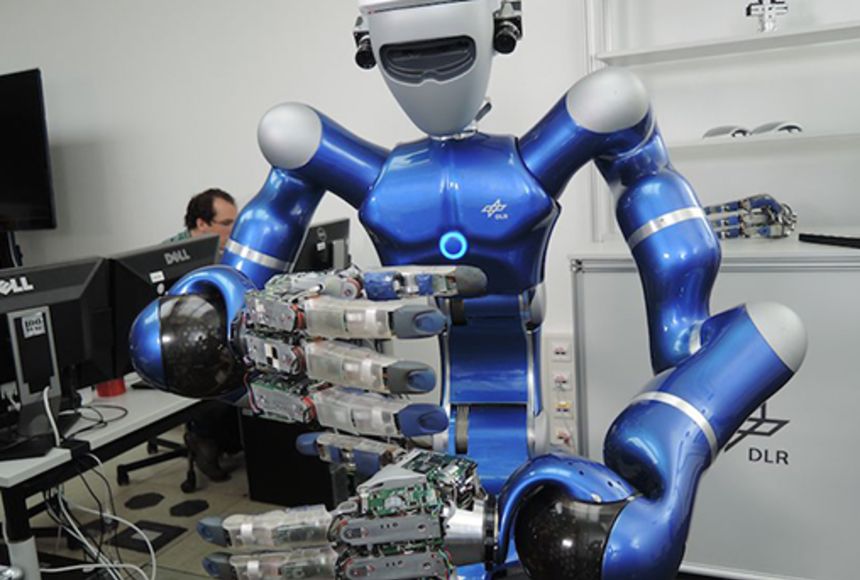When you think of a robot, what do you see? A machine that looks a bit like you and me? The reality is that robots can come in many different shapes and sizes. They don’t need to look like humans—in fact, most don’t. What a robot looks like depends on its purpose. Flying robots might look like helicopters, or have wings like insects or birds. Cleaning robots often look like little vacuums. Robots that are meant to interact with people often have a face, eyes, or a mouth—just like we do! Whether they look like us or not, most robots have three essential ingredients that make them a robot: sensors, actuators, and programs. Together, these ingredients are what make a robot different from other electronics and gadgets you might have around your house, like your computer, your washing machine, or your toaster. Sensors, Actuators, and Programs First, a robot has sensors that allow it to perceive the world. Just like we have eyes to sense light, ears to sense sound, and nerves in our skin that sense if something is touching us, robots have light sensors and cameras so they can “see,” microphones so they can “hear,” and pressure sensors so they can “feel” the things around them. The kinds of sensors that a robot needs depends on what the robot was made for. A robot vacuum cleaner might use a bumper with pressure sensors to understand where a wall is. A flying robot uses a group of sensors called an inertial measurement unit (IMU) to help it stay balanced when it flies. Some of the sensors used by robots are very different from the kinds of sensors used by people. Second, a robot has actuators that allow it to move around. We might use our legs and feet to walk and run, and we might use our hands to pick up an orange and peel it. A robot might use actuators such as motors and wheels to drive places, and finger-like grippers to grab objects and manipulate them or turn them around. Third, a robot needs a program that lets it act on its own based on what it is sensing. This ability to act on one’s own is called autonomy. Let’s look at this idea of autonomy more closely. Autonomy Can you think of anything that has autonomy? People have autonomy, because they can decide for themselves how to behave or move—at least most of the time! Your toaster, your washing machine, or a remote-controlled toy are examples of machines that don’t have autonomy, because they depend on a person to make decisions for them. When a robot is autonomous, it’s not quite the same as a person being autonomous, because a person still has to write the computer program that tells the robot what to do. For example, when we listen to music, our brains are in charge of telling us how to move our own legs to the beat—we don’t need someone to move our legs for us! But what if we want to build a robot that can autonomously dance to a beat? What three basic things would we need?1. Sensor. We would need a microphone (sound sensor) so that the robot could hear the music.2. Actuators. We would need some actuators (like motors with wheels) so that the robot could move.3. Program. We would need to write a program that says to the robot: “When you hear the music beat, move this way.” We would also need a computer—the robot’s brain—that could process all the sensory information and run the program, and some kind of power supply (like a battery) to provide electricity to our robot. The video above shows a simple robot that has been programmed to dance autonomously when it hears music. Check out those dance moves! Some robots are more advanced than our little dancing robot. Autonomous cars, for example, have advanced sensors that allow them to measure the distance to all objects in their environment and build a 3-dimensional (3-D) map of the area. They then have an advanced program that understands the meaning of the cars, roads, and obstacles in the 3D map. Based on this understanding, the program controls the robot’s speed and steering. Other robots are being designed to help at home, explore space, or improve our efficiency at work. Whatever their purpose, each robot will need a carefully thought-out set of sensors, actuators, and programs. While robots are becoming more advanced, it’s important to understand their limitations. How can they interact with humans in a natural way? How do they adapt to the real world, which is often full of unexpected events that are hard for machines to understand? And how can we make batteries that will keep them powered for long periods and that aren’t too heavy to carry around? These are the kinds of questions that robotics experts are working hard to solve.


